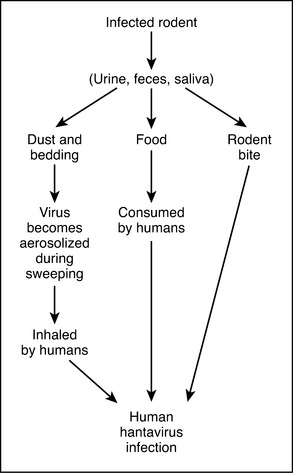HANTAVIRUS PULMONARY SYNDROME
Hantavirus pulmonary syndrome (HPS) was first identified in the United States in 1993, though it has probably been around a lot longer. It is characterized by a severe lung disease for which there is no cure.
TRANSMISSION
The most common method of HPS virus transmission to humans is when people breathe air that contains aerosolized, fresh rodent urine, feces, or saliva (Figure 18). Aerosolization occurs when dust or nesting materials are stirred up and tiny droplets containing the virus become airborne. Other methods of transmission that have been identified or suspected are direct transfer, as when a rodent bites a person, or indirect transfer, as when people touch something that has been contaminated with infected rodent excrement and then touch their noses or mouths or when people eat food contaminated by rodent excrement.
Stay updated, free articles. Join our Telegram channel

Full access? Get Clinical Tree



